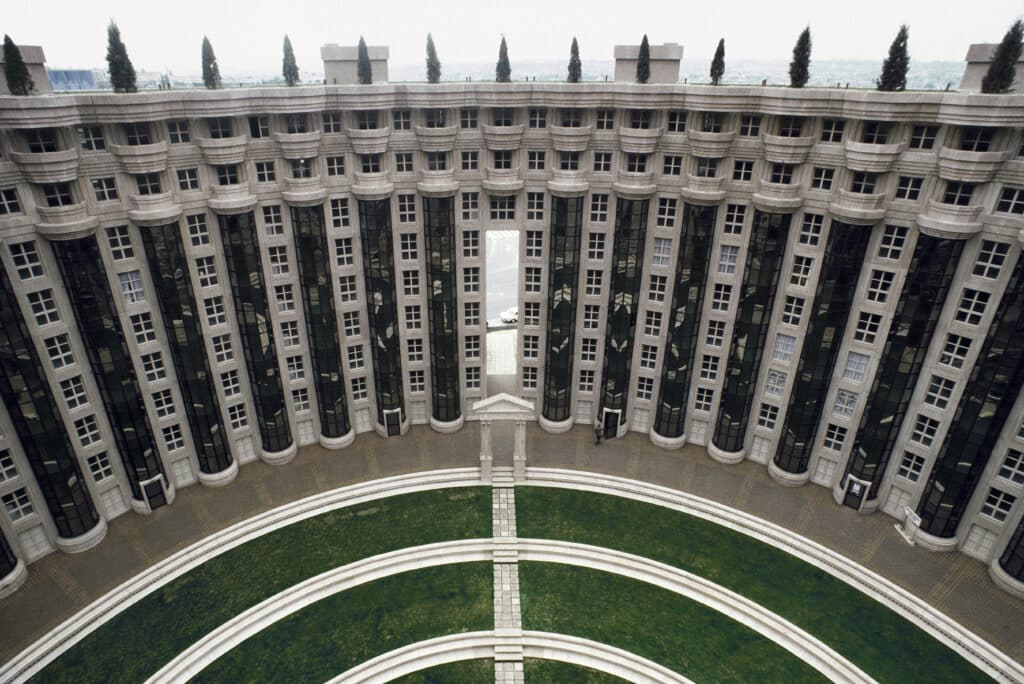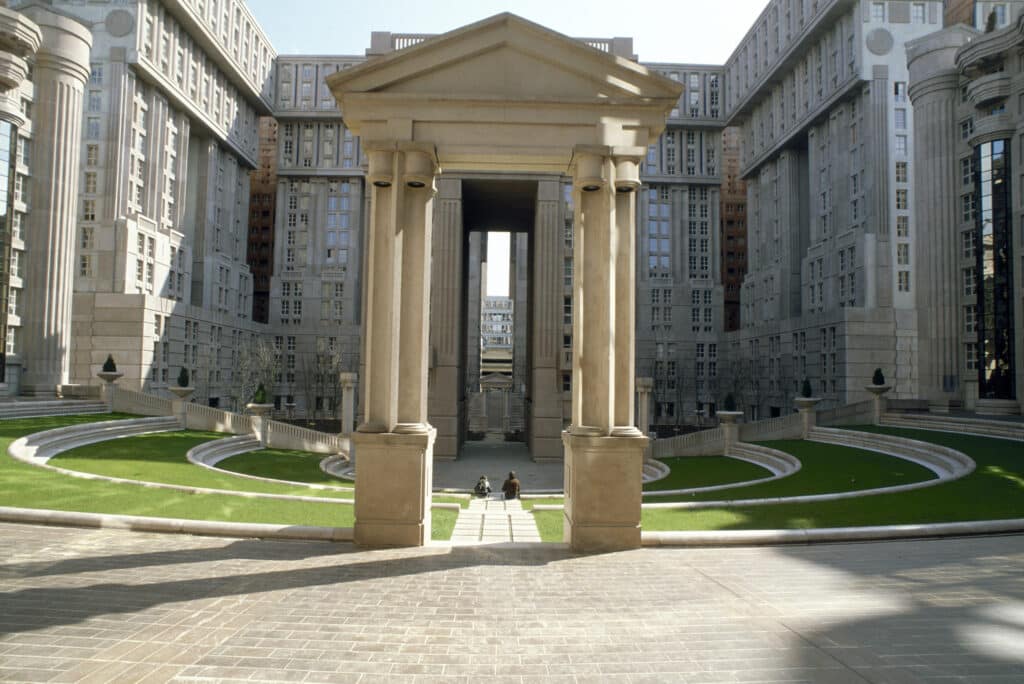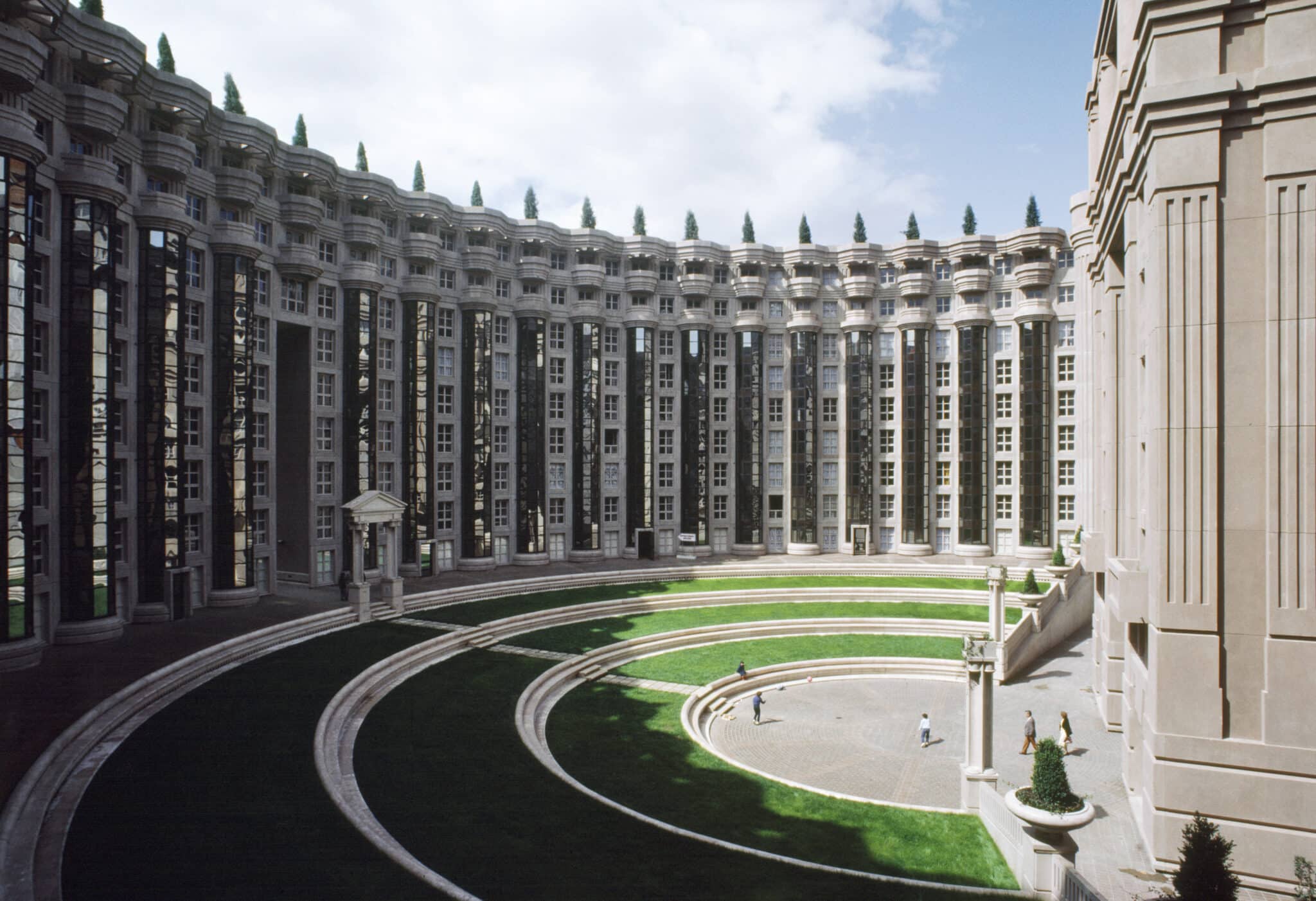A Parisian social experiment—a monumental estate for simple people with complicated architecture
Nézd meg az NBC videóját arról, hogy milyen is az élet ebben a szürreális épületkomplexumban!
The suburb of Noisy Le Grand, on the outskirts of Paris, is home to an extraordinary, little-known spot, right next to the capital of France. An impressive architectural example from the era of postmodernism, “Les Espaces d’Abraxas“, was built in 1982 by the Catalan architect Ricardo Bofill.
The complex is like a city within a city and has been used as the backdrop to some of the greatest science fiction films. It has been featured in movies, like Brazil and the second part of the movie Hunger Games, and thus became popular with a wider audience.

France’s population grew quickly after the II World War, and Paris started to get too crowded, and it was also a period of increased immigration. It was extremely difficult to find a place to start a family that was also close to the city. So, the authorities decided to develop the suburban villages of Paris and create flats for the young. In 1978, one of these tasks in the town of Noisy-le-Grand was assigned to Ricardo Bofill, the Catalan architect. The aim was to mix social classes and build a theatrical landmark.
… and it was the birth of the „Les Espaces d’Abraxas”, a complex of three buildings: Le Palacio (the palace), Le Théâtre (the theater), and L’Arc (the arch). These buildings consist of 610 apartments in what looks like a surreal ocean of concrete.
The Palace is the largest part and has a heavy, but ornate form with classical elements. The building, apart from the body, has two wings. The whole thing extends upwards. Prefabricated concrete elements and cement panels were used in the construction of the palace. The cement comes in different shades.

The Theater is a C-plan building that resembles an ancient amphitheater in its form and surroundings. From street level, it is just as monumental as the palace standing to the rear. From the courtyard, it is a building with a more modern and lighter appearance than the rest of the complex. It has glazing extending throughout its height, and the green courtyard steps resemble the auditorium of an ancient theater. The architect admitted in an interview that the ‘theatre’ was intended for the wealthier section of society. In the middle of the entire complex stands a nine-storey arch. There are only 20 flats inside.
Ricardo Bofill recently stated in an interview with Le Monde that he believed he could change the city, but in the end, “nothing happened.” In retrospect, he acknowledged that these areas have suffered a lack of community spirit, emphasized by the closed nature of the structure.
Vocabulary
| outskirts | külváros |
| little-known spot | kevéssé ismert hely |
| backdrop | háttér |
| wider audience | szélesebb közönség |
| crowded | zsúfolt |
| increased | megnövekedett |
| to be assigned to | kiadva lenni valakinek (munka) |
| theatrical landmark | itt: teátrális látványosság |
| concrete | beton |
| ornate | díszes |
| suburb | külváros |
| to extend upwards | felfelé nyúlni |
| prefabricated | előregyártott |
| to resemble | hasonlít (valamire) |
| arch | (bolt)ív |
| wealthy | gazdag, jómódú |
| in retrospect | visszatekintve |
| to acknowledge | elismerni |
| a lack of | hiánya valaminek |
| to emphasise | kihangsúlyozni |


